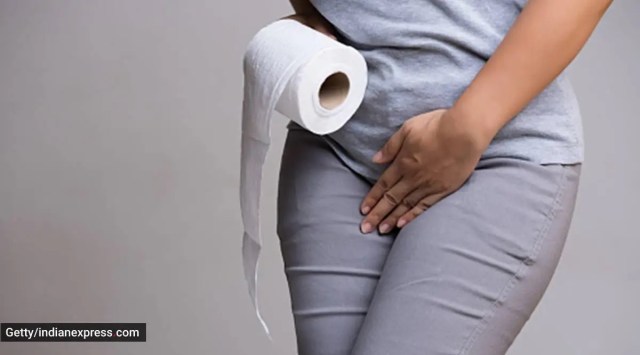📣 For more lifestyle news, click here to join our WhatsApp Channel and also follow us on Instagram
Women, this is why you may be peeing your pants or having pain while jumping
"The issue gets worse with age. So, it’s better to acknowledge it and start taking steps to improve," said Nidhi Sharma, a nutritionist
 Bladder incontinence can happen at any age (Source: Getty Images/Thinkstock)
Bladder incontinence can happen at any age (Source: Getty Images/Thinkstock) Over time, women and new mothers may experience a host of health issues. And the problem we are here to talk about today turns out to be an extremely common one — “1 out of 3 women faces this problem and it gets worse with age,” according to Nidhi Sharma, a nutritionist. But the solution seems to be within reach and quite achievable: all it would take is a strong pelvic region and core. So, let’s find out all about it below.
“Do you pee or have pain while jumping? Research shows that women, who have given natural birth deal with leakage of urine due to pelvic floor dysfunction. First, let’s understand that though it’s common having such conditions, it is not something to be ignored. The issue gets worse with age. So, it’s better to acknowledge it and start taking steps to improve,” she added, in an Instagram post.
View this post on Instagram
Agreed Dr Shobha Gupta, medical director and IVF specialist, Mother’s Lap IVF Centre, New Delhi and Vrindavan who explained that pregnancy, childbirth, prostate cancer therapy, obesity, and the strain of persistent constipation can all weaken the pelvic floor. “Symptoms of pelvic floor muscle dysfunction are leaking urine when coughing, sneezing, laughing or running, failing to reach the toilet in time, passing wind from either the anus or vagina when bending over or lifting, reduced sensation in the vagina, a sense of heaviness in the vagina, recurrent urinary tract infections, or recurrent thrush, and vulval pain, pain with sex, and inability to orgasm,” Dr Gupta told indianexpress.com.
What to do?
Sharma listed that pelvic floor and core exercises are a must.
*Start doing simple pelvic floor exercises – Kegels, glute bridges, squats and squeezing your bladder as if you are holding your pee. One should focus on breathing and engaging core muscles while doing these exercises.
*Simple core exercises like reverse plank, bird-dog, dead bug, superman can be started a few weeks after postpartum, with approval from your doctor.
*Needless to say, excess weight will also add pressure on pelvic muscles. “So, make sure to keep your weight in check by eating healthy and maintaining a good workout routine,” said Sharma.
Dr Gupta shared that beginners, when learning the exercises, should try to schedule five or six sessions every day. “It’s important to do these workouts properly. To ensure you are performing them correctly, see your doctor, physiotherapist for pelvic health, or continence advisor. Three workouts a day are sufficient after you fully grasp the exercises’ mechanics,” she said.
📣 For more lifestyle news, follow us on Instagram | Twitter | Facebook and don’t miss out on the latest updates!
📣 For more lifestyle news, click here to join our WhatsApp Channel and also follow us on Instagram






- 01
- 02
- 03
- 04
- 05





















